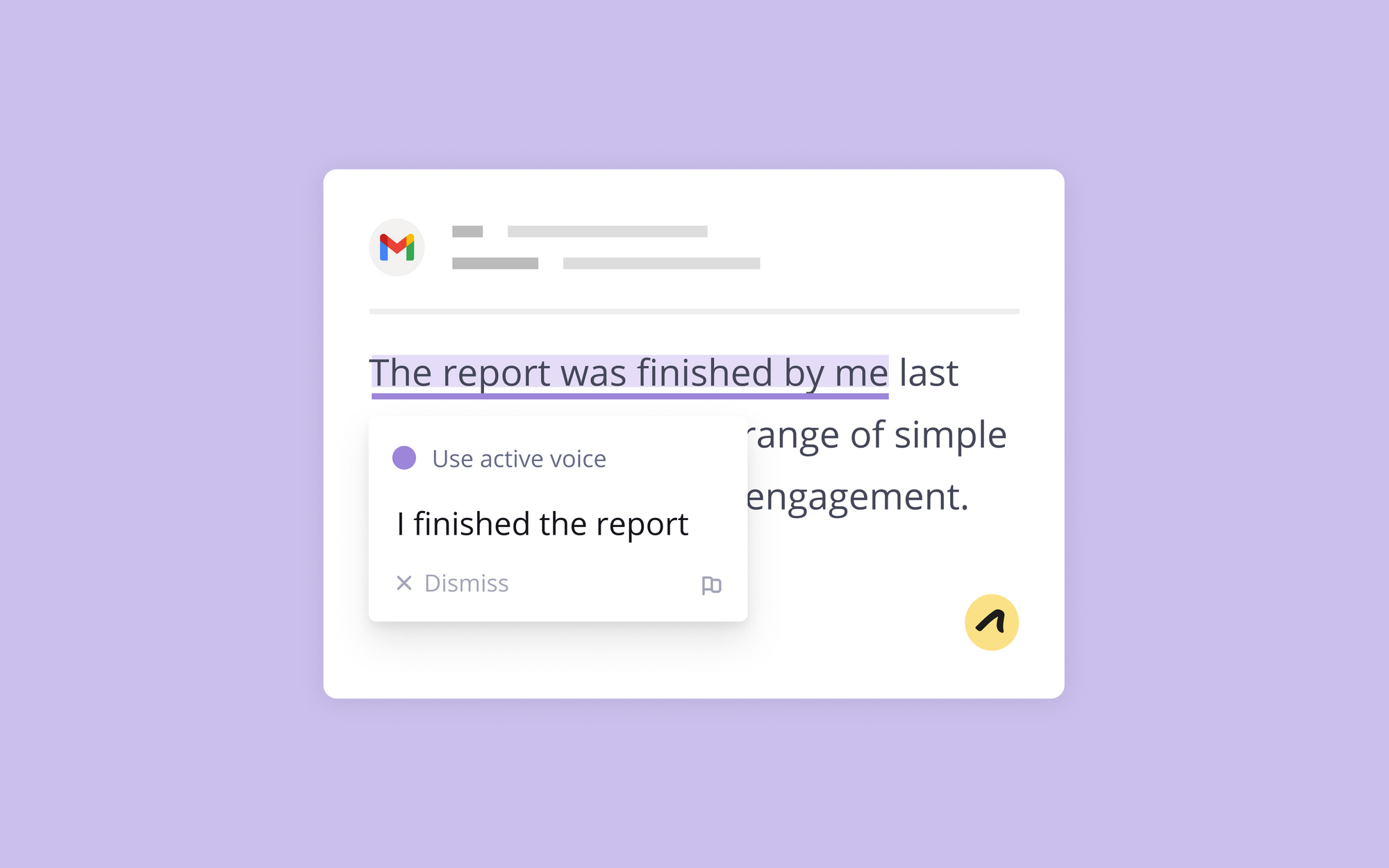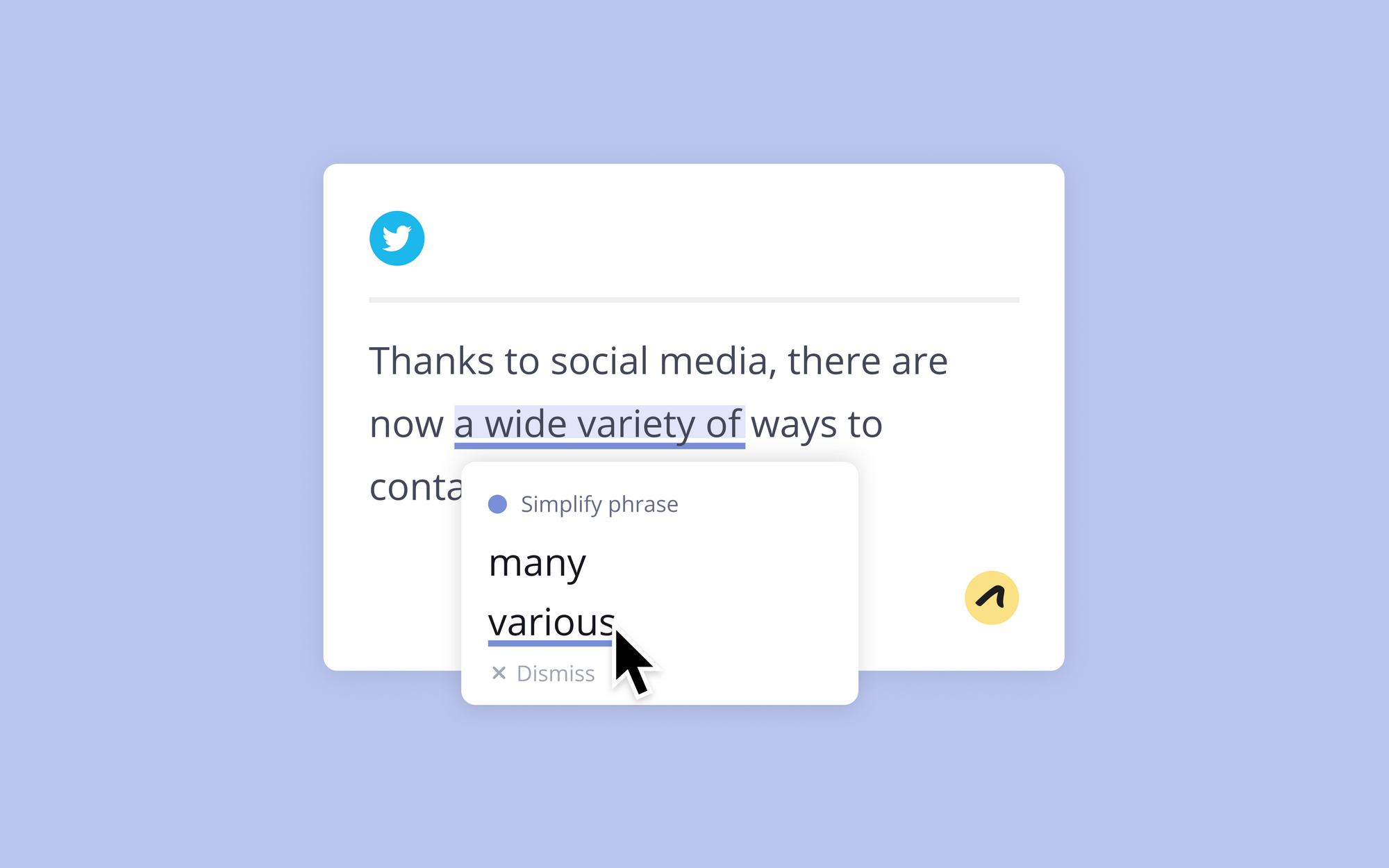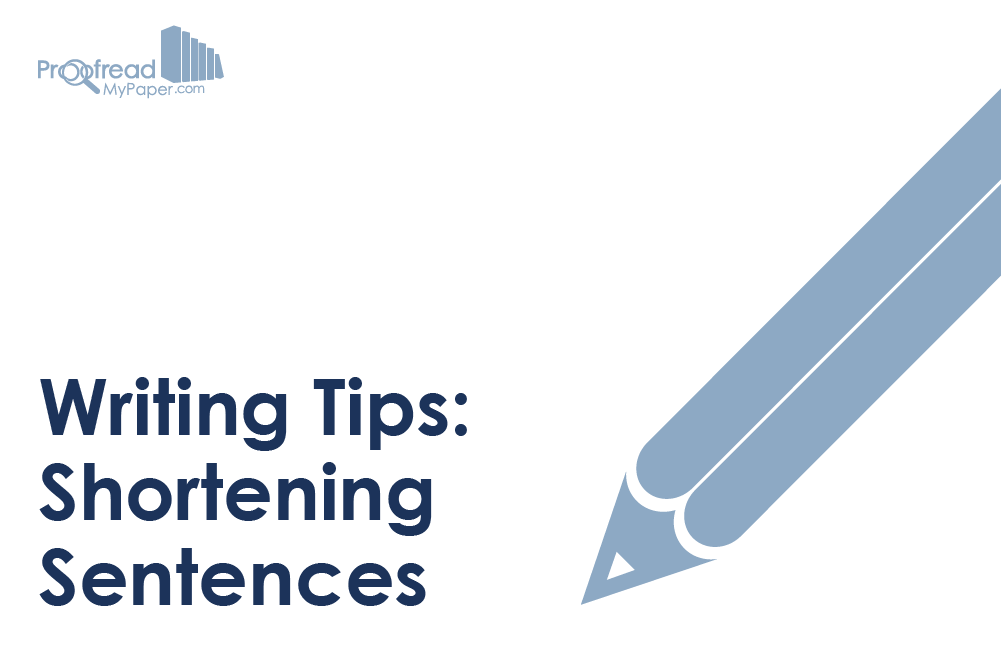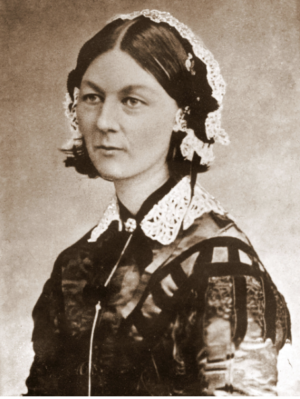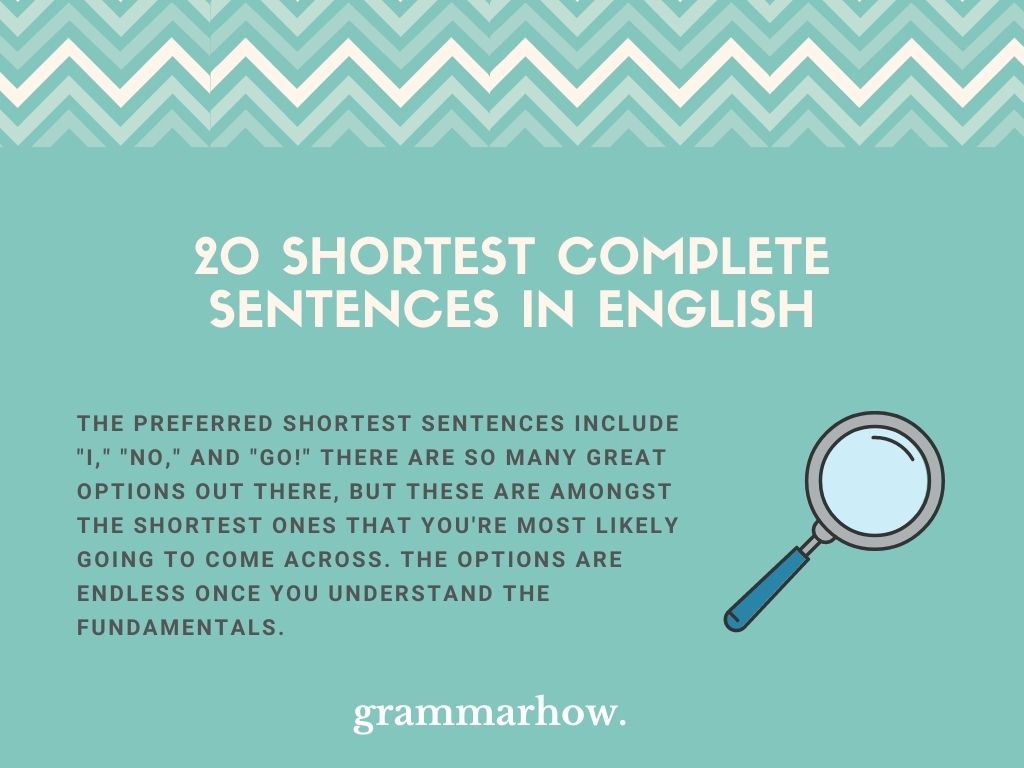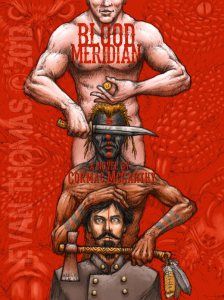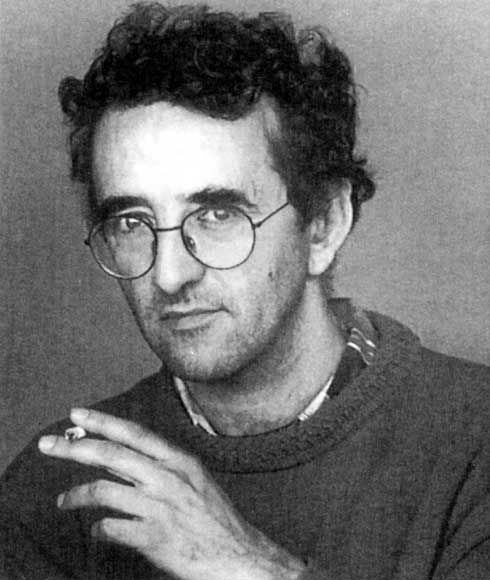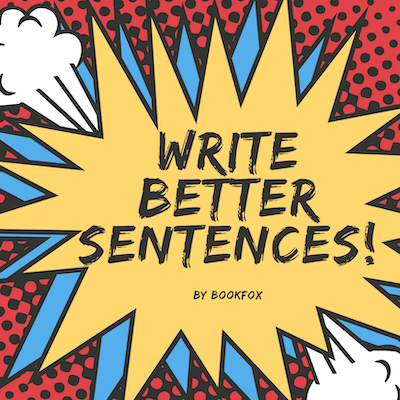A short guide to writing concisely
Short sentences are more effective than long sentences in most circumstances. One of the most famous ‘short sentence’ writers was Ernest Hemingway, whose sentences clock in at about seven words shorter than the average sentence. His terse style was central to his powerful prose, and all writers can learn from his approach.
Short sentences are seen as more effective for several reasons:
- They’re easier for readers to understand—sharper, more focused writing improves readability and keeps readers engaged.
- They make it easier to hit word counts—important in situations where you have limited room to say what you need to say.
- They help create a sense of urgency: useful when composing sales and marketing copy, or writing a persuasive argument.
It’s clear that Outwrite users recognize this: “how to shorten sentences” is one of our most popular queries. If you’re reading this, it’s likely you’re looking for ways to cut down your sentence length. Here are five quick and easy ways to shorten your sentences.
1. Remove unnecessary words
The number one sin that causes long sentences are unnecessary words. We often pepper our writing with extra words that don’t need to be there. Common culprits include:
- words like ‘however’, ‘therefore’ and ‘as we can see’ at the beginning of sentences (or included as separate clauses throughout a sentence)
- unnecessary adjectives—more than one or two is overkill
- adverbs like ‘very’, ‘just’, ‘simply’, which can usually be removed without affecting meaning
- junk phrases like ‘this means that’ can be cut down to ‘means’ or sometimes omitted altogether
Example:
Original version: As we can see, the results of the study reveal that there are very different motivations behind the actions of each chosen participant. (23 words)
Suggested cuts:
As we can see, the results of the study revealthat there are verydifferent motivations behind the actions of eachchosenparticipant.
Revised version: The results of the study reveal different motivations behind the actions of each participant. (14 words)
2. Change the word order
Often, simply changing the word order can shorten a sentence. For example, the sentence above can be shortened further with a couple of rearrangements:
Original version: The results of the study reveal different motivations behind the actions of each participant. (14 words)
Revised version: The study results reveal different motivations behind the participants’ actions. (10 words)
This reordering can be done within a sentence, as above, or at a sentence level. Rephrasing a passive sentence into active voice will usually cut out unnecessary words, while also making your writing more engaging.
Example:
Original version: The Christmas tree was decorated by Philip and his mum. (10 words)
Revised version: Philip and his mum decorated the Christmas tree. (8 words)
3. Don’t say it again, Sam
It’s very easy to unknowingly repeat yourself or use two words that mean the same thing (technically called a tautology). Chopping out repetitive words and phrases will cut down sentence length and make your writing clearer.
Example:
Original version: The hot summer sun was scorching. (6 words)
Revised versions: The sun was scorching (4 words); the scorching sun (3 words)
Example 2:
Long version: The teacher assisted me by helping me to complete the math problem. (12 words)
Revised version: The teacher helped me complete the math problem (8 words)
Example 3:
Original version: I went to university at Oxford University (7 words)
Revised version: I went to Oxford University (5 words)
4. One idea at a time
Often, we try to cram too many ideas into a single sentence (often referred to as a ‘run-on sentence’). The key definition of a sentence is ‘a string of words that expresses a complete thought’; all a sentence must do is convey one, clear thought.
Review long sentences to ensure they are stating one idea at a time. Where they don’t, make them separate, shorter sentences. Your reader will thank you for it!
Examples:
Original version: The car’s fuel pump needs replacement, the mechanic says it will be done by the end of today.
Revised version: The car’s fuel pump needs replacement. The mechanic says it will be done by the end of today.
Original version: The book To Kill a Mockingbird is written by Harper Lee, and it deals with racial inequality in 1930s America.
Revised version: The book To Kill a Mockingbird is written by Harper Lee. It deals with racial inequality in 1930s America.
Original version: Please do not walk on the grass; please clean up after your dogs; no bike riding or skateboarding in the parklands.
Revised version: Please do not walk on the grass. Please clean up after your dogs. No bike riding or skateboarding in the parklands.
5. Cut the conjunctions
Finally, many long sentences employ one or more coordinating conjunctions—a comma followed by a word like ‘and’, ‘but’, ‘nor’ or ‘or’. Quite often, these can be removed, and the clauses they connect can be turned into separate sentences. You may even find that you can turn some very long sentences into three (or even four) shorter, punchier sentences!
Example:
Original version: Sub-paragraph C lays out the manufacturing activities captured by the tax, but attention should be paid to sub-paragraph F since certain combinations of the activities listed under sub-paragraphs C and F could lead to the entity being double-taxed, and a potential restructuring should be considered in this situation. (48 words)
Revised version: Sub-paragraph C lays out the manufacturing activities captured by the tax. (11 words)
Attention should also be paid to sub-paragraph F. (8 words)
Certain combinations of the activities listed under sub-paragraphs C and F could lead to the entity being double taxed. (19 words)
A potential restructuring should be considered in this situation. (9 words)
An even easier way to shorten sentences
There you have it. Five quick and easy ways to take a long, potentially confusing sentence and turn it into one (or more) short sentences.
Of course, you can also let Outwrite’s paraphrasing tool shorten your sentences for you: Just double-click on or highlight a sentence, select the ‘shorten’ rewriting goal, and Outwrite will generate a list of suggestions for you.
Don’t have an Outwrite account? Sign up for free!
Hello Students! In this lesson, we are going to learn a comprehensive list of short English sentences for kids.
Short Sentences for Kids
- How are you?
- I don’t know.
- Call me back.
- Thanks a lot.
- I have no idea.
- No thanks, I am ok.
- How’s it going?
- Have a good trip.
- Don’t worry.
- How old are you?
- It’s ok.
- I am busy.
- I am sorry.
- Be careful.
- It was really good!
- Stop kidding.
- Nice to meet you.
- I agree.
- See you.
- God bless you.
- I do not understand.
- It really takes time.
- What is your name?
- How do you feel about it?
- I am not really sure.
- You inspire me.
- Are you there?
- What’s for lunch today?
- I need a little help.
- Nice to see you again?
- I am afraid you are right.
- Can I ask you something?
- I feel much better.
- Gland to meet you.
- Have a good trip.
- Everything is fine.
- You are everything to me.
- How dare you say that!
- Keep it there.
- I am very grateful to you.
- You are everything to me.
- I have no idea.
- How was your weekend?
- I am happy about this?
- Sorry for the inconvenience.
- You are wasting my time.
- I really appreciate it.
- Nothing special.
- You do it yourself.
- Please help yourself.
- Please say something.
- You are so lucky.
- Have a nice day!
- Keeps it under wraps.
- Can I come tomorrow?
- I haven’t told anyone?
- Tell me how it works.
- It was nice to talk with you.
- Talk to you later.
- Thank you for inviting us.
- Allow me to introduce myself.
- It,s really taking time.
- You are beautiful.
- Choose whatever you want.
- Don’t be afraid.
- Where do you want to go?
- I am not sure yet.
- I am really well.
- As soon as possible.
- That’s absolutely fine.
- You are so adorable.
- It’s none of my business.
- I feel much better.
- It is none of your business.
- How’s your family?
- No thanks, I am ok.
- It’s very thoughtful for you.
- Don’t make noise.
- Listen to your elders.
- It is not true.
- Sorry, I didn’t catch that.
- What is happening here?
- Please say something.
- Hope to see you next time.
- I am slightly hungry.
- I don’t like it.
- No, not at all.
- What’s the matter?
- Don’t be so excited.
- Have some patience.
- I am very pleased to meet you.
- Well done! Keep it up!
- This is not a joke.
- I am very familiar with him.
- I shall welcome to guest.
- Stay within your limits.
- Think as you like.
- Wait for your turn.
- May I go out please.
- Can you explain that again?
Brevity is famously the soul of wit, but it’s also highly valued in academia and the business world. Why? Because writing succinctly will help you get your point across clearly, making your work more impactful.
Perhaps the simplest way to make your writing more succinct is to shorten your sentences. Handily, we have a few top tips for doing exactly that!
1. Avoid Redundancy
“Redundancy” means using additional words that don’t add anything meaningful to a sentence. The phrase “twelve midnight,” for instance, means exactly the same thing as “midnight,” so the “twelve” is redundant.
It’s therefore a good idea to check your sentences for unnecessary words, as cutting these out will make a long sentences shorter. For example:
In actual fact, every single nurse worked from 3 am in the morning to twelve midnight.
Could be easily rewritten to say the same thing with fewer words:
In fact, every nurse worked from 3 am to midnight.
2. Break Up Long Sentences
Sometimes, long sentences are easier to follow if broken down into two or more statements. The following, for instance:
Making a sentence too long can be confusing because it is easy to lose track of what was said at the beginning, since they do not give the reader enough time to process what they are reading and by the end of the sentence you might have forgotten where it started!
That’s 51 words with barely a pause for breath. It would make sense to break it down into three shorter sentences:
Find this useful?
Subscribe to our newsletter and get writing tips from our editors straight to your inbox.
Making a sentence too long can be confusing. It is easy to lose track of what was said at the beginning, since they do not give the reader enough time to process what they are reading. By the end of the sentence you might have forgotten where it started!
3. Beware Padding Words
Padding words and phrases are things like “in my opinion” or “as a matter of fact,” which make a sentence longer but don’t usually add much meaning.
Saying “In my opinion, the political atmosphere is toxic,” for instance, means exactly the same as “The political atmosphere is toxic.” If you need to shorten a sentence, try looking for padding phrases you could remove.
4. Use the Active Voice
We’re often taught to avoid the active voice in academic writing, but sometimes using the passive voice makes sentences unwieldy. For example, the passive sentence:
The hypothesis was supported by the results.
Could be made a little simpler by using the active voice:
The results support the hypothesis.
5. A Final Thought…
Using only short sentences can make your writing lack fluency. To make your work engaging, the best thing to do is vary sentence length. You can then save shorter, punchier sentences for when you need to make a forceful point or ensure clarity.
Reading time: About 4 minutes
Shortening sentences — or, at least editing longer ones — is a great trick for making your writing more accessible to more readers…
When I lead a writing workshop with a sizeable group of engineers or business people, I notice that many of them write sentences that are way too long.
What’s too long?
The answer may surprise you.
Measure in averages rather than absolutes
You want an average sentence length of just 14 to 18 words. Some people argue with me when I make this suggestion. They think they’ll end up sounding like the dumb reading books we used back when I was a student in grade school.
In those days, the main characters were always white, of course, and their names were Dick and Jane. They had a dog named Spot and the plot development featured mind-numbing plot twists like, “See Dick run.”
Perhaps because of the trauma of early exposure to such works, many writers don’t understand the value of short sentences. In fact, I always have clients who say things like, “Dostoyevsky [or any other famous author] wrote long sentences and everyone praised him for it. Why can’t I?”
Well, you can, but are you convinced you can write as well as Dostoyevsky? And even if you can, are you aware that even as general literacy has increased, our ability to read and understand long sentences has decreased over the last four centuries?
I posted about this decline several years ago, but here’s a summary of how preferred sentence word-count length has evolved…
- Pre-Elizabethan times: 50 words
- Elizabethan times: 45 words
- Victorian times: 29 words
- Early 20th century: 23 words
- Today: 14 to 18 words
For this reason, you don’t want your sentences to be like the girl in the photo at the top of this page — desperate to grow taller.
Not ALL long sentences are problematic
That said, not every long sentence needs to be short. The best writing always shows a variety of sentence lengths, ranging from 60 words to as few as one. You simply should attend to the average. And there’s no need for you to calculate this number yourself.
Instead, use an online tool to help you. I’ve road-tested most available pieces of software doing this, and I favour ProWritingAid. It costs (I am not a reseller), but it’s not expensive and there is a free version you can use for up to 500 words. I also like no-cost Count Wordsworth. (Words per sentence is the second measure on the chart.) I no longer like the Hemingway App because it regards every long sentence as a problem, which is untrue.
If your average is more than 20, here’s how to shorten your sentences:
Split super-long sentences in two
Here is an example, as easy as simply adding an extra period in the middle of the sentence:
- The government can now better understand the potential location and impact of where the biggest earthquakes will occur within a 1.5 million square kilometre area and is using the information to assess and prioritize seismic upgrades at its facilities. (39 words)
becomes
- The government can now better understand the potential location and impact of where the biggest earthquakes will occur within a 1.5 million square kilometre area. [25 words] It is using the information to assess and prioritize seismic upgrades at its facilities. [14 words]
Cut redundant words
We’re often inefficient with our language, using more words than necessary. Consider the following phrases:
- “Circle around” can become “circle”
- “Write down” can become “write”
- “Added bonus” is simply a “bonus”
- “Get to the point as quickly as possible” is really “get to the point”
- “Close proximity” is “close”
- “During the course of” is “during”
Focus on cutting out unnecessary words and you’ll be using a relatively easy way of trimming your sentence length.
Avoid adverbs
Adverbs clutter up your copy. You can usually live without them. Here are some examples:
- “That’s usually a good thing to do.”
- “That’s fairly good coffee.”
- “I totally agree”
- “Actually, I disagree.”
Just delete all those italicized words and you’ll be able to shorten your sentence.
Use the active voice
We sometimes fall into the passive voice, where the “actor” of the sentence goes into hiding. Here is a famous example:
- Mistakes were made.
Who made those mistakes? We don’t know! Thus, the sentence is passive. The only good thing about this example is that it’s short!

- The man was bitten by the dog. [passive voice – seven words]
This sentence is easier to read and understand if you shorten it by making it active:
- The dog bit the man [active voice – five words]
If you make the habit of preferring active voice, you’ll usually have shorter sentences. Given that it’s sometimes challenging to identify passive voice, I usually like to let software do the work for me. ProWritingAid does a good job of identifying passive voice.
Avoid words ending in –tion
What do the words “creation,” “rumination,” “abbreviation” and “collaboration” have in common, besides ending in –tion? They all started their lives as perfectly good verbs:
- create
- ruminate
- abbreviate
- collaborate
But when you turn them into nouns you need to add a new verb to the sentence to make it work. Usually, this verb is boring, like “to be” or “to do” or “to make.” Instead of adding these unnecessary words, try to return to the original verb. Here’s an example:
- He wrote on architecture in collaboration with John Betjeman.
- He collaborated with John Betjeman, writing about architecture.
I like to use my search key (Command + F on a Mac) to look for words ending in –tion. Whenever I find one, I work to see if I can turn it back into a verb.
Strive to add additional shorter sentences — really short ones
If you ever want to drive down an average, add some items that are dramatically shorter, less expensive, or less significant. With writing, you need some sentences with a one-to-five word-count. How do you do that?
I just did!
“How do you do that?” is a five-word sentence. And, “I just did” is a three-word one. Here are some other super-short sentences you can consider:
- How?
- Why?
- When?
- Why not?
- What’s going on?
- What happened?
Always try to work some of these super-short sentences into your writing, and you will see your average tumble to more reasonable levels.
Learning to shorten your sentences is one of the best tricks you can use to turn yourself into a dramatically better and more effective self-editor.
This is a substantially updated version of a post that first appeared on my blog on Feb. 13/18.
*
My video podcast last week aimed to take the mystery out of sticky sentences. Go here to see the video or read the transcript, and you can also subscribe to my YouTube channel.
*
Does fear of writing paralyze you? Don’t let this nasty psychological barrier make your life miserable or cost you missed income. I’ve developed a series of 18 videos (with audio and text versions) for just $95 that will help you banish the fear. Plus, you’ll get membership to an online group of others facing the same challenge. Have a look at the program here.
*
Do you shorten your sentences? What’s your favourite trick for doing it? We can all learn from each other so, please, share your thoughts with my readers and me in the “comments” section, below. Anyone who comments on today’s post (or any others) by March 31/23 will be put in a draw for a digital copy of my first book, 8 1/2 Steps to Writing Faster, Better. To leave your own comment, please, scroll down to the section, directly underneath the “related posts” links, below. Note that you don’t have to join the commenting software to post. See here to learn how to post as a guest. It’s easy!
Getting your wording just right
Paraphrasing is a natural part of the writing process as it helps you clarify your thinking and suit your words to your audience. Using a Paraphrase Tool helps structure and streamline this work, and our paraphrase tool offers 20 modes, many of them free, for accomplishing just this. The 20 modes we offer are diverse, including a summarize tool, a free grammar checker, a mode to simplify text, and a sentence shortener. There are sentence rephrasers and paraphrase rephrase tools, and we pride ourselves on having both, since our reword generator accounts for context at both the sentence and paragraph levels.
When you google paraphrase you will get a variety of results, from a free Paraphrase Tool, to an article spinner, to a general phrase tool, and it can be hard to determine which of these rephrase tools will best help you complete your work. If you simply need to get a word rephrase, that is, reword only small elements within the sentence, many tools will suffice, but there is the risk that you end up with a tool that does not consider context and produces very awkward and ungrammatical sentences. Rephrasing is very much an art, and we’ve built our paraphrase bot to produce the most correct results in 20 modes in over 100 languages, making it the best paraphrasing tool at an exceptionally low cost. So whether you need to paraphrase deutsch, paraphrase greek, or paraphrase bahasa melayu, the next time you think, I need something to paraphrase this for me, you’ll know where to turn.
From keywords to paragraphs
Generating paragraphs with unique ideas can be challenging, and too often writers get stuck at this stage of the writing process. With our paragraph tool, you can enter keywords and let our AI generate paragraphs for you, so that you can have something to work with, refine the output, and become more engaged in your writing.
A paragraph generator creates links between your ideas, such that the output is sensible, unique, and stimulating, very close to what you would expect a thoughtful human paragraph writer to produce.
Paragraph makers are nice, but what about a short story generator? Because our AI is generalized, it serves a story generator, an essay generator, a poem generator, and much more. To generate compelling stories, you should provide the story generator with useful keywords from which it can develop plot elements, including characters, setting details, and any situational information. To generate reasonably good essays, you should likewise provide the essay maker with details around argumentative positions and any other pertinent ideas. If you more specifically want an introduction paragraph generator or conclusion paragraph generator, you can provide starter text and keywords that will best enable our essay creator to produce them.
You may well ask, “is this essay generator free?” Everything on this site is free within a 3-day trial, so you can test and develop confidence in our products. You may also be wondering where this is an essay automatic writer or if it will take a while to get results. All results appear within a matter of seconds, so you can move through your work as quickly as possible.
You may have professional needs for creating paragraphs as well, such as those needed for cover letter. Most of the time a cover letter template includes information that is not relevant to you; by using your own keywords, we can produce cover letter examples that are relevant to your use case and often require very little editing. By using this service, you can also learn how to write a cover letter and achieve the cover letter format you need.
Plagiarism checker free
Like everything else on our site, you can check plagiarism free within a trial, which is a great opportunity for those who want to check a paper for plagiarism without committing to paying before they see results. This free plagiarism checker is great for students and clearly indicates how to check for plagiarism by highlighting areas of similarity between the two texts. Just to be sure you are not accidentally plagiarizing, be sure to check all of your paraphrases as well.
Sentences can be made up of many words and phrases. It’s also possible to make a sentence with only one word. Even better than that, it’s possible to use only a handful of letters to create the shortest complete sentences. This article will explore a selection of them.
The preferred shortest sentences include “I,” “no,” and “go!” There are so many great options out there, but these are amongst the shortest ones that you’re most likely going to come across. The options are endless once you understand the fundamentals.
I.
Officially, “I” is the shortest complete sentence. You can use it as a subjective response when someone asks a question like, “who did it?” Replying with “I” is a short form of saying “it was I.”
- Who is there?
- I.
- Who did it?
- I.
No.
If you want to reject the previous statement or question, “No” is a great two-word sentence. It’s simple and efficient.
- Do you want to go with me?
- No.
- Will you be there?
- No.
Go!
“Go” is the first verb form you can use to create a simple sentence. The subject is implied when “go” is used like this (i.e. it implies “you go”). However, “go” is one of the only two-letter verbs that this works for.
- What should I do now?
- Go! Don’t wait around.
- Are you ready to race?
- Go!
Oh.
“Oh” is an exclamation. Most people use it when they don’t know what else to say. It’s a simple two-letter phrase that shows you are surprised.
- I’m not going to be there with you.
- Oh.
- I’m sorry.
- Oh.
Hm.
“Hm” is a thoughtful sentence. You should use these two letters when you are thinking about an answer that might be suitable to the question.
- You’re going to think about this, right?
- Hm.
- I don’t know what to do. Do you have any ideas?
- Hm.
Hi.
“Hi” is a very common two-letter sentence. It is a greeting, and native speakers use it to informally say “hello” to their peers.
- Hi!
- Hi! How are you?
- Hello, there!
- Hi.
Me.
“Me” is similar to using “I.” Technically, it’s not correct to use because it is the object form, but the idea is to replace “I” with “me” when answering a question. For example, “who did it?” can be answered with “me” (implying “it was me”).
- Who’s there?
- Me.
- Who else can be on this team?
- Me.
You.
“You” moves up to three letters. We’ve run out of two-letter sentences, but there are so many three-letter ones. “You” is another subjective pronoun that can work to answer specific questions like “who did it?”
- Who is going to get this done?
- You.
- Who will be there for you?
- You.
Yes.
“Yes” is the opposite of “no.” It’s an affirmative response that agrees with a statement or shows that you are willing to do something.
- Will you be there?
- Yes.
- Can you come with me?
- Yes.
Why?
“Why?” is a good example of a complete sentence that becomes a question. You should use this when you want to know what made someone do something.
- I did that.
- Why?
- I thought you’d like it.
- Why?
Him.
“Him” allows you to use an objective pronoun to highlight who might have done something. “Him” refers to a man, allowing you to point him out if he relates to the question.
- Do you know who did it?
- Him.
- Which one of these people was there?
- Him.
Her.
“Her” is another objective pronoun that works. Like “me,” it’s probably better to use “she” as the subject, but informal English allows you to use object pronouns as long as they’re in one-word sentences.
- Which one of them was it?
- Her.
- Who did it?
- Her.
Hey.
“Hey” is another example of an informal greeting that replaces “hello.” It allows you to greet your friends and peers. It’s three letters long, which is still a remarkably short sentence.
- Hi!
- Hey.
- Hello, friend.
- Hey.
I Am.
“I am” is the first example of two words making up a short sentence. While two words are used, only three letters are present. Here, you can include the subject (only “I” will work to keep it three letters) and the verb (as long as it’s two letters long).
- Are you going to be there later today?
- I am.
- Are you the one in charge of these findings?
- I am.
I Do.
“I do” is another great example of two words making up a short completed sentence. You can use “do” to show that you are going to do something. Again, “I” has to be used as it’s only one letter. The verb can only be two letters to keep the sentence short.
- Do you take this man to be your husband?
- I do.
- Do you have what it takes?
- I do.
Sit.
“Sit” is a three-letter verb form that works as a sentence. Just like “go,” the subject is implied through the context. It can mean something like “you sit” or “he should sit,” depending on the context.
- What should I do now?
- Sit.
- Do you want me to hang around?
- Sit.
Run.
“Run” is another good verb choice made of only three letters. There are plenty of others out there, but we won’t overwhelm you. All verbs work in the same way here, where the subject is always implied. They work as imperative forms (orders or commands).
- What do you want me to do now?
- Run!
- What is that noise?
- Run!
One.
Numbers are also suitable as short sentences when they are spelled out. One of the shortest numbers is “one,” which is only made up of three letters.
- How many of you are going?
- One.
- How many years have you done this?
- One.
Two.
“Two” is twice as much as one, but it is made up of the same number of letters. You can use it to answer questions that ask for a quantity.
- How many of them are left?
- Two.
- How many people can this accommodate?
- Two.
Ten.
“Ten” is the largest number you can include in a three-letter sentence. It’s possible to use this in the same way as the other numbers, where “ten” is the quantity.
- How many can come today?
- Ten.
- How many are in stock?
- Ten.
Martin holds a Master’s degree in Finance and International Business. He has six years of experience in professional communication with clients, executives, and colleagues. Furthermore, he has teaching experience from Aarhus University. Martin has been featured as an expert in communication and teaching on Forbes and Shopify. Read more about Martin here.
I was wondering what the correct word would be for a sentence that is tightly packed with meaning. For example, a good aphorism. An aphorism is short, but has a lot of meaning behind it and requires considerable thought in order to understand it.
I thought of the word dense (as in «this is a very dense passage that takes some time to understand»). But in my mind, dense implies that its more technical and difficult to read. I’m trying to describe a simple passage that has a lot of meaning behind it. For example, a passage like this:
We can forgive a man for making a useful thing as long as he does not admire it. The only excuse for making a useless thing is that one admires it intensely. (The Picture of Dorian Gray, Oscar Wilde)
Edit: Just for more context. I sent the preface of The Picture of Dorian Grey to a friend, he quickly read it and said that he didn’t understand it, and I said «you have to think about it, that page is really dense.» I need a word to replace dense in that context.
Truncate
Verb
Past tense: truncated; past participle: truncated
1. Shorten (something) by cutting off the top or the end.
“a truncated cone shape”
When you cut something short you truncate it, and you can truncate many things – including sentences. Why do people cut sentences short? Truncated sentences are used for a variety of reasons in both spoken and written English. Be it in a novel, play or poem, writers know that truncated sentences can have a range of effects, and they use them on purpose, often to grab our attention. Truncated sentences pop up a lot in everyday speech too, although they can cause some confusion when used incorrectly.
We’re going to take a closer look at truncated sentences now, and explain what they are, why you might want to use them, and how you can you use them to improve your English skills.
Improve your English grammar, vocabulary and more with
EF English Live
What is a truncated sentence?
Truncated sentences are often referred to as short sentences, but there is a difference between short sentences and truncated sentences. A truncated sentence has to have been cut short – there need to be words missing. For example:
“I like reading”
“I like reading more than Diane [does]”
The first sentence is short. However, the second sentence is truncated, as it has been shortened. Here there’s no need for the word “does” to be used in order for the meaning of the sentence to be understood, so the writer or speaker has removed it – in this case, because it’s a more casual, conversational way to express how they feel about reading.
A good way to understand the effects of a truncated sentence is to extend the sentence by adding the words that are missing, and comparing the extended version to the truncated one. Take a look at these examples and read them aloud – and think about the effect created by shortening the sentence:
“I like reading more than Diane”
“I like reading more than Diane does”
“I like reading books more than Diane likes reading books”
Why use a truncated sentence?
The above example shows us that truncated sentences can be used to make communication more casual and conversational. But what other reasons are there for using truncated sentences?
Create tension, haste or urgency – We talk about a short, sharp shock – when we shorten our communication, we give it power. For example, “Let’s go!” creates a sense of urgency, whereas the longer “Let’s go now because the shops will be shutting in half an hour” doesn’t. When it comes to communicating, sometimes less is more. Think of the importance of sentence structure – short, simple sentences or truncated sentences can create tension, haste or urgency, whereas longer compound or complex sentences are slower, and often feature in formal texts.
Reinforce what’s being said – A truncated sentence can place emphasis on a previous statement or sentence. “Don’t call me any more. I’m serious.”
Make an impact – You can use short, truncated sentences to create punch and make a point. There is a natural pause after a sentence. This gives the other person space in which to consider what is said. Using shorter truncated sentence gives the other person more time to pause and think about what is being said, creating a bigger impact. It works. Believe me.
When used with ellipsis, truncated sentences can have a different kind of impact too:
Abby lifted her glass. “May the worst always be behind you. May the sun always…” She gazed out at the street.
Here the impact is not short and sharp, but a lingering one that leaves you wondering what the speaker would have said had she continued.
Clarify a longer description – Following a long description, often in formal texts, or in work emails, for example, truncated sentences can be used to summarise and clarify what’s gone before:
The ordering system requires an initial completion of form DC10 followed, after this has been processed by finance and legal, by an approval that allows for form DC12 to be completed after the affirmative response to DC10 is received. So remember: Use DC10. Wait for a response. Then use DC12.
How to use truncated sentences
It’s easy to trim words from sentences – just makes sure that when you remove them from a sentence you still get a sentence that makes sense.
You can use truncated sentences whenever you want to create punch and make a point, but try not to overuse them. Don’t use too many truncated sentences in a row, as this can sound unnatural, and make the reader or listener feel as if they are being bombarded. Now listen. Remember. That’s it. You hear? Too many is too many.
Experiment with truncated sentence lengths. You can use phrases and even words as sentences. Really.
As a general rule, short, truncated sentences work well at the start of a paragraph or speech item to grab attention – Give me this. Not that. Or at the end, to summarise and signal completion.
Try using a truncated sentence as a summary after a longer description. By the end of a long sentence or series of long sentences, a reader or listener may have forgotten the main point of what is being said. So truncated sentences can be useful to end on here to clarify what is being said and to draw attention to the main points. Clarify. And draw attention.
When not to use a truncated sentence
There are instances where removing words from sentences can feel natural, but leave the meaning of the sentence unclear. For example:
“I get along with my supervisor better than my co-worker.”
Does this person mean that they like their supervisor more than their co-worker, or do they mean that their co-worker has a better relationship with the supervisor than they do? Truncated sentences can lead to ambiguity, so sometimes it’s better to extend the sentence by adding the words that complete the intended meaning – “I get along with my supervisor better than my co-worker does.”
Want to learn more? Visit our website to start learning English online today!
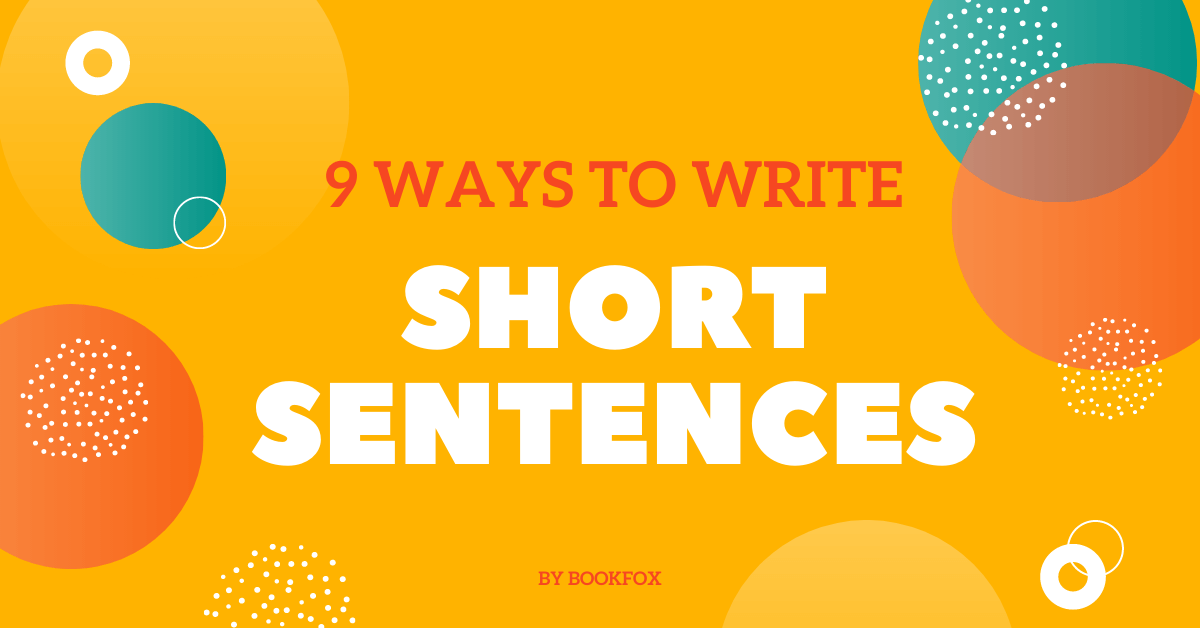
Short sentences rarely have the ambiguity or mystery of a long sentence. They rarely have twists or swerves or switchbacks, because that requires the length of a longer sentence. They rarely win your admiration for verbal virtuosity, the way that a long sentence can astonish you.
What is the effect of short sentences? The effect is violence. A short sentence can gut punch you. They can deliver a surprise with the utmost efficiency. They can usher in a fantastic plot revelation with a deft flick of a few syllables. They have a power due to their brevity, and they have agility because they have nothing to weigh them down.
It would be a mistake to call a short sentence a simple sentence. Although many short sentences are simple in that they’re not compound or complex or compound/complex, they’re not simple meaning a childish thought, or one easy to comprehend. The short sentence can have a complex idea. It can deliver a sophisticated or challenging concept.
Although I dimly remember the gist of lengthy sentences, it’s the short sentences that I quote. About half of the examples below I remembered from memory.
If you want a short sentence definition, it’s impossible to give a limit. Is it defined by word count or letter count? These things don’t matter. A short sentence is not under 7 words or under 20 syllables. You recognize a short sentence when you see one. And the short sentence is also defined by its surroundings: a sentence might not be short when surrounded by ten-word sentences, but when surrounded by 100-word sentences, it seems like a dwarf.
If you’re like me, you want to write short sentences that make the reader stop and reread them, make them ponder them late at night, make them quote to their friends. So let’s get started. This list of beautiful short sentence examples should help you write sentences that stun and dazzle.
1. Change Registers
David Foster Wallace uses a short sentence to provide the sole commentary in a piece otherwise filled with description and details. His short story Incarnations of Burned Children — about a horrifying moment when a pan of boiling water falls on a child — is only 3 pages, but it’s full of sentences topping the 100-word mark. After the longest sentence of the piece, a 232-word monster, he follows it with a 10-word sentence:
“If you’ve never wept and want to, have a child.”
Not only is there difference in length, but in the type of content. All the other sentences offer no grand insights, no wisdom from above, no overarching commentary. They only relate the strict details of what’s happening, while this short sentence offers the only distant observation of the piece. It’s one of the most devastating sentences I have ever read.
2. Shock with Contrast
In Cormac McCarthy’s Blood Meridian, the most repeated phrase is “They rode on,” which is often a stand-alone sentence. Given McCarthy’s leanings toward the super-long sentence connected by “and” (a technique called Polysyndeton), these 3 word sentences crack like a rifle shot.
Check out how he sandwiches this brief phrase between several much longer sentences:
“They cut the throats of the packanimals and jerked and divided the meat and they traveled under the cape of the wild mountains upon a broad soda plain with dry thunder to the south and rumors of light. Under a gibbous moon horse and rider spanceled to their shadows on the snowblue ground and in each flare of lightning as the storm advanced those selfsame forms rearing with a terrible redundancy behind them like some third aspect of their presence hammered out black and wild upon the naked grounds. They rode on. They rode like men invested with a purpose whose origins were antecedent to them, like blood legatees of an order both imperative and remote. For although each man among them was discrete unto himself, conjoined they made a thing that had not been before and in that communal soul were wastes hardly reckonable more than those whited regions on old maps where monsters do live and where there is nothing other of the known world save conjectural winds.”
Roy Peter Clark says, “In the land of 40-word sentences, the 20-word sentence bears a special power.” In this case, in the land of 80-word sentences, the 3-word sentence is king.
3. Change the Voice
In Clockwork Orange, the ultra-violent Alex has to undergoes some crazy behavioral modification from the state. Of course the whole book is filled with made-up language, which makes it a thrill to read, but this simple sentence that ends the paragraph (and a whole chapter) doesn’t play with language at all. It’s different from other sentences not only by length, but also by normal language. Both those differences make the last sentence stop hard:
“Oh, it was gorgeosity and yumyumyum. When it came to the Scherzo I could viddy myself very clear running and running on like very light and mysterious nogas, carving the whole litso of the creeching world with my cut-throat britva. And there was the slow movement and the lovely last singing movement still to come. I was cured all right.“
Compare the plainness of that last line to the previous words like gorgeosity, viddy, nogas, litso and britva. It’s so normal that it’s fantastical!
4. Create a Funnel Shape
Joan Didion is a master of tightly wound sentences, coiled and ready to spring. In the essay, “On Going Home” she writes about the friction of visiting her parents with her husband, and all the small ways her husband is at odds with her family:
“My brother does not understand my husband’s inability to perceive the advantage in the rather common real-estate transaction known as “sale-leaseback,” and my husband in turn does not understand why so many of the people he hears about in my father’s house have recently been committed to mental hospitals or booked on drunk-driving charges. Nor does he understand that when we talk about sale-leasebacks and right-of-way condemnations we are talking in code about things we like best, the yellow fields and the cotton-woods and the rivers rising and falling and the mountain roads closing when the heavy snow comes in. We miss each other’s points, have another drink and regard the fire. My brother refers to my husband, in his presence, as “Joan’s husband.” Marriage is the classic betrayal.“
What I love about this paragraph is that it’s shaped like a funnel. If we include the sentence just before this quote, we have six sentences, and each of the six sentences grows shorter and shorter.
- 104 words
- 57 words
- 50 words
- 12 words
- 12 words
- 5 words
Six sentences, the first longest and each one afterwards a little shorter, until we culminate in the final, shortest sentence, a five-word bombshell that describes the totality of everything that comes before it. It’s the perfect way to end a paragraph. The shape of the whole paragraph directs you toward the end. Even if the paragraph indentations were stripped away, readers would know they had reached the end of a thought.
5. Sign off with Brevity
George Orwell’s 1984 is about a man fighting the totalitarian power of a government; aka “Big Brother.” He spent his life resisting the authorities trying to make him submit. And after loads of torture and social conditioning, the novel ends with one of the most chilling lines of all time:
“He loved Big Brother.”
Could you imagine if this line was any longer? Could you imagine if George Orwell had written, “But it was all right, everything was all right, the struggle was finished, because he had won the victory over himself, since he loved Big Brother”? The wordiness diminishes the sadness. When readers get blindsided by that sparse, four-word last line, they want to cry.
6. Repeat your Short Sentence

And when Kurt Vonnegut uses that sentence again and again throughout Slaughterhouse Five, setting it against the backdrop of one of the worst tragedies of WWII — the firebombing of Dresden — the lackadaisical carefree attitude of that sentence provides a lovely contrast to the horrific facts about Dresden.
By repeating “So it goes” again and again throughout the narrative, Vonnegut is showing how incongruous that attitude is compared to Dresden, and also voicing the devil-may-care attitude of the rest of the world toward the firebombing. The phrases creates this lovely thematic unity throughout the whole book.
7. Cluster Technique
Roberto Bolano is not known for his short sentences. He’s known for the five-page sentence in 2666 totaling more than two thousand words, and for the page-long sentences of By Night in Chile.
But unlike Cormac McCarthy who sticks short sentences between his long sentence to vary the rhythms, Bolano will write a number of very short sentences right in a row, changing the whole rhythm of a paragraph. The effect of these short sentences is that the prose decelerates, as it becomes choppy. Also, the tone becomes very matter-of-fact.
Look at this example. Here three friends are visiting a painter named Johns, who cut off his hand as an act of performance art. The three friends want to know why he did it:
“Dusk had settled around Morini and Johns now. The nurse made a move as if to get up and turn on the light, but Pelletier lifted a finger to his lips and stopped her. The nurse sat down again. The nurse’s shoes were white. Pelletier’s and Espinoza’s shoes were black. Morini’s shoes were brown. John’s shoes were white and made for running long distance, on the paved streets of a city or cross-country. That was the last thing Pelletier saw, the color of the shoes and their shape and stillness, before night plunged them into the cold nothingness of the Alps.”
Four sentences in a row, all about five words. Look at how all those short sentences in a row slow down time. How the attention to small, almost peripheral details gives the scene an otherworldliness. It changes the entire atmosphere of the scene.
Check out James Salter doing the cluster technique in “A Sport and a Pastime“:
“They are waiting on the street in the late afternoon. The air is thin as paper. The day is raw.”
For some reason I see the triple-short sentence as the most popular variety of this form. Usually it’s a Sentence-Verb-Object sentence (SVO), an order that seems to underscore the simplicity. As a reader, it really makes you measure the words and pace your reading.
8. Reveal Character

I’ll give you a Sunday-School hint: It’s about Jesus.
Kudos if you guessed it:
“Jesus wept.”
That’s right — two words. This is a fantastic sentence not because of rhythms, or because of contrast with longer sentences around it, but because how much is accomplished with only two words. Here we have a prophet that the disciples will proclaim is God embodied in flesh, and yet when he meets up with the death of his friend Lazarus, he breaks down. He weeps. In only two words, this is the best example of the humanity of the God/man. We see Jesus humbled, broken, teary. It’s difficult to characterize anyone well in a single sentence, but these two words add so much to the persona of Jesus, it’s practically a miracle in itself.
9. Open your Novel
There are so many famous examples it’s difficult to choose. In fact, I won’t even attribute the first lines below, and you can probably guess most of them:
- Call me Ishmael.
- The old man was dreaming about the lions.
- Lolita, light of my life, fire of my loins.
- All this happened, more or less.
- I am an invisible man.
- A screaming comes across the sky.
Why is it so powerful to start a book with a short sentence? The reader enters the world you’ve created without any delay or apprehension. By the time that first period closes over them, they’ve already succumbed to your charms. It’s too late to turn back.
There is no way to abandon reading a sentence this short. And it carries an awesome load of responsibilities upon the remarkably frail shoulders of a few words — establishing the tone, the style, the setting, the conflict.
That’s why Gabriel Garcia Marquez said that he used to spend months trying to get the first sentence right, but when he did, the rest of the book fell into place.
If you want to improve your sentence-writing skills, check out this online course. Learn things like:
- the 2/3/1 rule, leaning/standalone rule
- how to break free of common sentence guidelines
- The tricks and techniques to make a beautiful sentence



